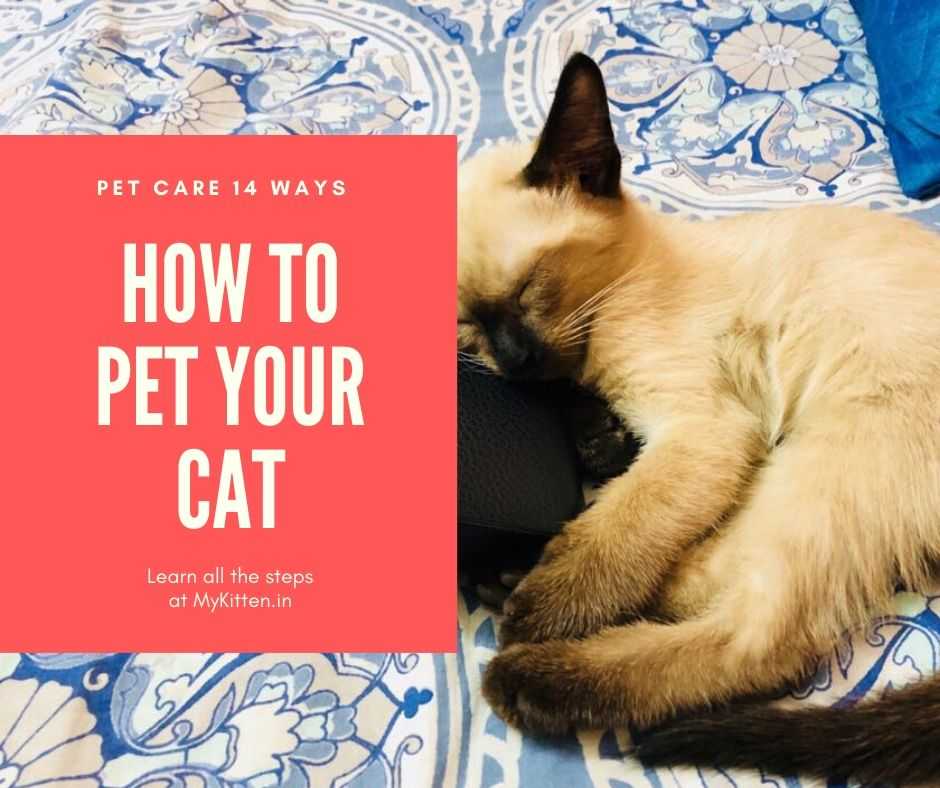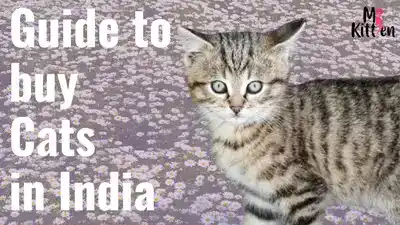How to Pet Your Cat: A Friendly Guide
Have you ever wondered if your feline friend truly loves you?
Are you unsure if you’re petting your feline friend correctly? Many cat owners unknowingly pet their cats in ways that can cause stress or discomfort.
A proper cat petting guide can make all the difference in strengthening the bond between you and your cat. Petting is not just a way to show affection; it’s also an essential aspect of cat care.
Learning how to pet your cat can help prevent scratching and biting, while also promoting a sense of calm and relaxation in your pet.
In this friendly guide, we’ll explore the best ways to pet your cat, helping you build a deeper and more loving relationship with your feline companion.
Reasons Why Cats Make The Best Pets in India
15 useful tips for a positive experience with your kitty
1. Let your cat sniff you before you pet her
This is a casual first step towards a good bonding time between you and your kitty. Try extending a hand or finger and allow the cat a chance to touch her nose to you.
If she shows no interest in your hand, reconsider the plan some other time. However, if she sniffs your hand, or rubs her head against your hand, chances are she liked it.
2. Respect your cat’s privacy
If your cat loves being a pet that doesn’t mean she wants it all the time. Like all other living beings be respectful of her personal space because there may be times when she simply wants to be alone.
3. Cat bumping her head against you
When a cat bumps her head against your body, that means she is seeking your attention. Try showing her love at once.
4. Begin with a soft chin-scratch
Rub your cat’s chin gently with your hand, particularly where the jawbone connects to the skull below the ears. It’s possible the cat will project her chin out, as a pleasure.
5. Look at the areas behind the ears
Apply gentle pressure with your palm. Make her know you are giving her attention and affection. The base of the ears are her scent-marking spots, if she approves your action, she will bump her head or side of her head to scent mark at you.
6. Pet the cheeks just behind the whiskers
Cats like such experience and if she does she will rotate her whiskers forward.
Also Read: Cat Biting and Scratching
7. Gently run your hand along the side of your cat’s face
When your cat is near you, try stroking her middle area of the face with one of your fingers while encircling her whole face and stroking the top of the head with your thumb. The cat is all yours.
8. Pet your cat if she sits in your lap and lies
See if your cat likes your lap and lies down to relax, as humans have body heat that makes them comfortable.
9. Pet a cat when she’s on her side
Carefully stroke the side that is facing up. If she enjoys the feeling, she will probably meow or purrs, and try to communicate with you.
10. Love the cat from head to tail
Try running your hand from the forehead to the base of tail repeatedly and massage her neck muscles gently. Apply gentle pressure and make it continuous and slow-motion in one direction as some cats do not prefer reverse strokes.
11. Talk to your cat softly
Purring is one of the ways a cat signals that it feels sociable and seeks attention and wish you to do the same. This is accompanied by ankle twining and head bumping.
Also Read: All About Persian Cats
12. Know when your cat doesn’t want to be petted anymore
Sometimes petting can become overstimulating. The signs to stop such activity may be a soft bite or scratch.
13. Stay away from the tummy
Cats might roll onto their back and expose their belly but never try to rub their tummy, as many cats don’t like it. She will instinctively hesitate to get strokes in the stomach with all the vital organs.
14. Approach the feet with caution
Begin petting the cat to get her relaxed, then ask permission to stroke her feet by touching one foot once with your finger

The only thumb rule is to be patient! Good Luck!
Understanding Your Cat's Body Language
The way your cat positions their tail, vocalizes, and displays posture can reveal their comfort level with petting. Recognizing these signs is essential for interactive cat petting and ensuring a positive experience for both you and your cat.
Tail Positions and What They Mean
A cat’s tail is a significant indicator of their mood. A held-high tail often signifies confidence, while a tucked-in tail can indicate fear or submission. When petting your cat, observe their tail position to gauge their comfort level.
Cats use vocalizations to communicate their feelings. Purring is often a sign of contentment, but it can also be a self-soothing mechanism. Listen to the tone and volume of your cat’s meows to understand their needs and boundaries during petting.
Relaxed Posture Indicators
A relaxed cat will often display open and receptive body language, such as exposed belly or a relaxed posture. These signs indicate that your cat feels comfortable and trusts you, making it an ideal time for petting.
Warning Signs to Stop Petting
It’s crucial to recognize when your cat is uncomfortable or stressed. Signs such as flattened ears, hissing, or attempting to move away are clear indicators that it’s time to stop petting. Respecting these boundaries is vital for maintaining a positive and trusting relationship with your cat.

The only thumb rule is to be patient! Good Luck!
How to Pet Your Cat: Basic Techniques
The way you pet your cat can significantly impact their comfort and your bond with them. Effective petting techniques are crucial for a positive interaction.
When it comes to petting techniques for cats, the initial contact is vital. It’s essential to start with a gentle approach to gauge your cat’s mood and comfort level.
First Contact: Palm or Fingertips?
Deciding whether to use your palm or fingertips for the first contact depends on your cat’s individual preferences. Some cats prefer the gentle touch of fingertips, while others enjoy the broader contact of a palm.
It’s recommended to start with fingertips, as they allow for a more subtle and controlled touch, helping you to read your cat’s reactions more accurately.
Building Comfort Through Scent
Building comfort through scent is another effective feline petting technique. Cats use scent marking to claim their territory and establish a sense of security. By gently rubbing your fingers on your cat’s cheeks or near their scent glands, you can help them feel more at ease.
This technique not only comforts your cat but also strengthens your bond, as it involves a form of gentle, affectionate touch that cats often find soothing.

The only thumb rule is to be patient! Good Luck!
Favorite Petting Spots for Most Cats
Understanding where cats like to be petted can make interactions more enjoyable for both you and your cat. While every cat is different, there are common areas that many cats enjoy being petted.
One of the best ways to pet a cat is to start with areas they find most pleasurable. Many cats enjoy being stroked on their backs, heads, and behind their ears. Gentle strokes in these areas can be very soothing for them.
Belly Rubs: Why Most Cats Dislike Them
Despite the common belief that cats enjoy belly rubs, many cats are actually quite sensitive in this area. The belly is a vulnerable spot, and some cats may feel exposed or threatened when it’s touched.
It’s essential to observe your cat’s reaction when attempting to pet their belly. If they show signs of discomfort or aggression, it’s best to avoid this area.
Paws and Whiskers Sensitivity
Cats also have sensitive paws and whiskers. Their paws are highly innervated, making them very sensitive to touch. Similarly, their whiskers are highly sensitive and play a crucial role in their spatial awareness.
When petting your cat, it’s generally best to avoid their paws and whiskers unless you’re sure they enjoy being touched in these areas. Paying attention to your cat’s body language will help you determine what they find comfortable.
By following these cat petting tips and being mindful of your cat’s preferences, you can build a stronger, more positive relationship with your pet.

The only thumb rule is to be patient! Good Luck!
Building Trust Through Proper Petting
Trust is the foundation of a healthy human-cat relationship, and proper petting is key to establishing it. When done correctly, petting can be a powerful tool for bonding with your cat.
Timing Your Petting Sessions
The timing of your petting sessions can significantly impact your cat’s comfort and trust. Start with short sessions and gradually increase the duration as your cat becomes more comfortable.
Using Treats and Positive Reinforcement
Using treats during petting can create a positive association, helping your cat to enjoy the experience. Positive reinforcement is a powerful tool for building trust.
It’s crucial to recognize when your cat has had enough petting. Signs such as tail flicking, ear flattening, or attempting to move away are indicators that it’s time to stop.
Giving Space When Needed
Respect your cat’s personal space and allow them to initiate contact. Giving space when needed is essential for building and maintaining trust.
By following these guidelines and being mindful of your cat’s preferences, you can strengthen your bond and create a more trusting relationship through proper petting techniques.

The only thumb rule is to be patient! Good Luck!
Common Mistakes When Petting Cats
Many cat owners unknowingly make mistakes when petting their feline friends, often due to misconceptions about cat behavior. Understanding the dos and don’ts of cat petting is crucial for building a strong, trusting relationship with your cat.
One common misconception is the idea of “dominating” your cat. This myth suggests that by asserting dominance, you can control your cat’s behavior. However, this approach can be harmful and is not recommended. Cats value their independence, and attempting to dominate them can lead to fear and aggression.
Instead of focusing on dominance, it’s more effective to establish a bond based on trust and mutual respect. By doing so, you can create a more positive and loving relationship with your cat.
Patience: The Key to Feline Affection
Patience is a vital component of building trust with your cat. Cats are often more affectionate on their own terms, and rushing the petting process can be counterproductive. Allow your cat to initiate contact and dictate the terms of the interaction.
By being patient and letting your cat set the pace, you can foster a deeper and more meaningful connection. This approach not only enhances your relationship but also ensures that interactions are enjoyable for both you and your cat.

The only thumb rule is to be patient! Good Luck!
Strengthening Your Bond Through Touch
Petting your cat is more than just a gentle gesture; it’s a way to build a deeper connection with your feline friend. By understanding how to pet your cat correctly, you can strengthen your bond and create a more loving relationship.
As we’ve explored in this guide, knowing your cat’s body language, using the right petting techniques, and avoiding common mistakes are all crucial steps in developing a strong and trusting relationship with your cat. By applying these tips on how to pet your cat, you’ll be well on your way to creating a lifelong friendship.
Touch plays a significant role in the bond between a cat and its owner. Gentle petting can be a soothing experience for both you and your cat, promoting relaxation and affection. By incorporating the techniques outlined in this guide into your daily interactions, you can enhance your cat’s sense of trust and security, leading to a more fulfilling and loving companionship.

The only thumb rule is to be patient! Good Luck!



